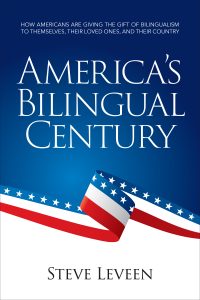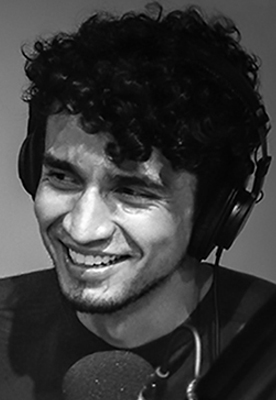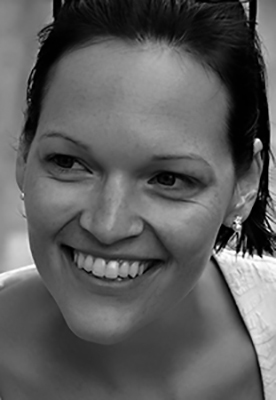Learning More than a Language: Learning Respect for a Culture, Too
“That’s so weird.”
That was the reaction of a five-year-old boy in Brunswick, Maine, when Margaret Boyle, an associate professor of Romance languages at nearby Bowdoin College, was reading The Very Hungry Caterpillar to a group of kindergarteners.
It wasn’t the caterpillar’s feasting on junk food that perplexed the little boy; it was the fact that Margaret was reading the Eric Carle classic in Spanish.
The youngster’s pronouncement took her by surprise. “Growing up in Los Angeles in a Mexican-American family, being close to Hispanic cultures was normal for me,” says Margaret, who is also Bowdoin’s director of Latin American, Caribbean and Latinx studies. “But I realized then that in smaller, more monocultural and monolingual communities like Brunswick, children don’t have this kind of exposure.”
That was when Margaret saw that the multilingual, lunchtime read-to-me program she had started at Kate Furbish Elementary School in 2017 could do more than acquaint children with different languages. It was also an opportunity to inculcate in this newest generation a tolerance for, acceptance of, and lively curiosity about cultures and people that were not like them.

Bowdoin students Zunain Husain and Emma Simpson introduce their young charges to Bengla and Greek.
Seeing the world without stereotyping
And so, starting with the school’s 2020-21 academic year, Margaret added a new component to what she had named the Multilingual Mainers program. Along with the lunchtime reading for all 700-plus of the children, 11 PreK-2 classes now incorporate a Multilingual Mainers curriculum. It uses world languages to teach the children critical thinking and problem-solving around bias.
“We encourage the children to develop their own language stories and to share them with their friends,” says Margaret, who is a member of Maine’s Department of Education World Languages Advisory Council. “We use languages to lay the groundwork for curiosity, compassion, and understanding about people who are different from us racially, religiously, and ethnically.”

Associate Professor Margaret Bowdoin, founder of Multilingual Mainers, says learning another language helps children become more tolerant and accepting of people different from them. Steve Ciembroniewicz, the principal of the program’s participating elementary school, is in the background. (Photo by Fred Field.)
Connecting language with culture
As with the lunchtime reading, the classroom learning component of Multilingual Mainers has Bowdoin’s language students teaching the youngsters. They work in partnership with the classrooms’ regular teachers, who participate in in-service workshops on multilingualism and intercultural competence that Margaret holds for them.
Both Kate Furbish’s teachers and administration are enthusiastic about the exposure their young charges get to a world beyond their own. In Brunswick, whose population hovers around 20,000, most families do not speak a heritage language at home. But for those who do, the Multilingual Mainers program gives these children a point of pride in their bilingualism.
“There may be just one child in a class who’s a native Bangla speaker,” says Margaret, “but instead of feeling intimidated in class, that child now becomes the expert.”
Parents are also supportive. As one parent, whose child was conducting some reverse parent-child teaching at home, said, “It was a pleasure to be exposed to a language that we knew nothing about.”

Meet Mar, one of the sock puppets that Bowdoin 2021 alum Norell Sherman created to help youngsters stay in the language they’re learning. Don’t even think of trying to talk to the puppets in English!
Sock puppets and ukuleles
The 2022 spring term features 22 Bowdoin student instructors, two per classroom, all of whom are enrolled in Margaret’s course on Teaching and Learning Languages and Cultures. For this term, the Bowdoin volunteers are teaching Spanish, French, Italian, Russian, Chinese, Greek, and Bangla. Language selection is based on the volunteers’ own multilingual proficiencies, and thus changes each semester as volunteers cycle in and out.
(The lunchtime module has a larger roster of languages, as qualified parents and members of the community can also volunteer, Covid restrictions permitting. This has led to a dozen choices for kids in the 2022 spring term: Spanish, French, Chinese, Vietnamese, Japanese, Italian, Russian, Korean, Kiswahili, Gujarati, Urdu, and German.)
“The creativity of my Bowdoin students has stunned me,” Margaret says with a laugh. “They’ve found really strong ways to forge a connection with the children.”
One of the instructors plays the ukulele as part of the class instruction. Another fashioned sock puppets with names in the language the instructor is teaching. Don’t even try to talk to these puppets in English: they answer only when you speak to them in their native tongue.
An idea gaining traction
Word about Multilingual Mainers is getting out beyond Brunswick. At the virtual 2022 conference of the Modern Languages Association, Margaret and Mohammed Kilani, a 2021 Bowdoin graduate who was among the teaching cohort at Kate Furbish, participated in a panel on multilingualism and public engagement.
Margaret is also the co-director of the National Endowment for the Humanities’ 2022 summer institute on Identity and Multilingualism Through Picture Books. The 10-day conference is designed for K-3 educators across the country.
Parents whose children participated in the first year of the classroom partnerships offer some of the most persuasive reasons for the importance of raising more Multilingual Mainers. Said one parent: “Right now is the age when the kids’ brains are like sponges and soak up a language so easily, compared to us old parents! I really wish we were able to provide more language opportunities to our kids.”
Said another: “I would like it to be a permanent, year-round priority for students of all ages to develop fluency in another language.”
— Mim Harrison




 You can book Steve for many different audiences
You can book Steve for many different audiences








 First, know that she has one of those glorious English accents (or what all of us who are not English would call an accent), which makes her a natural for the audio book narration that she does. Although U.S. born, Caroline grew up in England and studied literature at the University of Warwick (fyi for American ears: that second “w” is silent).
First, know that she has one of those glorious English accents (or what all of us who are not English would call an accent), which makes her a natural for the audio book narration that she does. Although U.S. born, Caroline grew up in England and studied literature at the University of Warwick (fyi for American ears: that second “w” is silent).




Leave A Comment